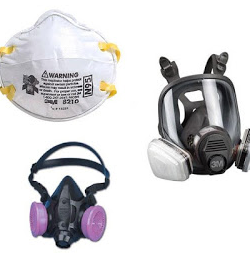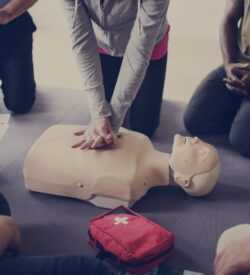SKID STEER/BOBCAT SAFETY TRAINING
The Skid Steer/Bobcat Safety Training course from Safety First Training is an OHSA based program that teach the setup and safe operation of the Skid Steer. The course covers the steps of pre-operation inspections, overall equipment features, safe operation procedures and hazard avoidance. Training is offered around Southern Ontario including Toronto, Mississauga, Brampton, Markham, Oakville, Burlington, Hamilton, Niagara, Kitchener, Waterloo, Cambridge.
We also offer Train the Trainer courses for Skid Steer/Bobcat and various other lifting equipment.
Note – we do not provide public sessions for individuals
Want to take the Skid Steer/Bobcat Online Course instead?
View Online CourseDescription
Skid Steer/Bobcat Safety Training Course
This course is designed using parameters set out by:
- CSA Standard B335-15 – The CSA Safety Standard for Lift Trucks (B335-15) identifies the knowledge, practical skills and evaluation requirements needed by lift truck operators. The practical evaluation requires lift truck operators to demonstrate competency skill level equal or greater to the industry accepted measurements.
- The Occupational Health and Safety Act, REGULATION 851. INDUSTRIAL ESTABLISHMENTS as it pertains to lift truck safety.
Course Outline:
- Related Government legislation
- Skid Steer Training Certification Safety Video
- Responsibilities of the workers, supervisors and employers
- Pre-operational checks
- Stability Principles
- Lift capacity and load limitations
- Fuel safety
- Safe operating procedures
- Pedestrian Awareness
- Practical Evaluation
Skid steer and Bobcat equipment are commonly used in a variety of industries in Ontario, including construction, agriculture, landscaping, and more. While these machines are powerful and versatile, they also pose a significant risk to operators and those in their immediate vicinity if not operated properly.
Therefore, it is crucial for individuals who operate or work around skid steers and Bobcats to receive adequate safety training. Here are some reasons why:
- Compliance with Ontario Occupational Health and Safety Regulations: According to Ontario’s Occupational Health and Safety Act, employers are responsible for ensuring that workers are trained in the safe use of equipment. Failure to comply with these regulations can result in fines, legal action, and potential accidents.
- Minimizing accidents and injuries: Proper training can significantly reduce the risk of accidents and injuries associated with the operation of skid steers and Bobcats. These machines are heavy and powerful, and accidents can be catastrophic without the proper precautions and training.
- Protecting the operator: Skid steer and Bobcat operators are responsible for their safety and the safety of those around them. Proper training can teach operators how to operate the equipment safely, understand the limitations of the machine, and recognize potential hazards.
- Increased productivity: Skid steer and Bobcat operators who are adequately trained are more efficient and productive, leading to increased profitability for businesses.
- Improved employee morale: Providing proper safety training for employees demonstrates that their employer values their well-being and is committed to their safety. This can increase employee morale and reduce turnover.
Skid Steer and Bobcat Safety Training is essential in Ontario to comply with occupational health and safety regulations, minimize accidents and injuries, protect the operator, increase productivity, and improve employee morale.
Train the Trainer – Skid Steer/Bobcat Safety Training Course
Our professional Train the Trainer certification course for Skid Steer allow our clients to learn how to teach OHSA based courses directly to their employees. When individuals or groups of employees need safety training, these train the trainer programs can be more cost effective than hiring outside training companies. We will train you to be an effective Counterbalance Forklift safety trainer for your company.
Our Train the Trainer Course Package includes:
- Professional Teaching Guide
- Participant Course Handout
- Evaluation Forms
- Wall Certificate/Wallet Card template
- Instructor Course Presentation
- Course Test and Answer Key
- Course Video Supplement
Duration:
The course duration is up to 8 hours, depending on experience level.
Assessment:
A passing grade of 75% is required in order to receive a certificate.
Completion:
Upon successful completion of this course, participants will receive a PDF wall certification and PDF wallet card for their records.
Skid Steer/Bobcat Safety Training Course: Training Safety Tips:
- Follow safe procedures for entering and exiting the skid steer.
- Never climb onto the loader unless the lift-arm supports are in place or the bucket is resting flat on the ground.
- To climb aboard, face the machine and maintain three points of contact on the steps and handholds.
- Do not climb on hand or foot controls.
- When it’s time to exit, do not leave your seat before lowering the bucket to the ground, setting the parking brake and then turning off the engine.
- Do not leap off the skid steer — follow the same three-point-contact procedure to exit.
- Clean the walkways and other working surfaces so the machine is ready to go for the next day or shift.
- Follow safe operating procedures.
- Never attempt to operate the machine from the outside.
- Sit down when operating the skid steer, so you can maintain your balance.
- Keep your legs, arms and head inside the cab when it’s in use.
- Wear your seat belt while working. Make sure the restraint bar is in place. Never disable any safety device.
- Make sure bystanders or workers on the ground are far enough away to see them and avoid injury.
- Do not turn the machine or load/unload where the ground is not level, to avoid tipping. Never travel across slopes but straight up and down. The heavy end of the machine should face uphill.
- Do not operate on unstable ground.
- Always hold the bucket in the lowest possible position when traveling or turning.
- Follow proper maintenance procedures.
- Always follow the manufacturer’s recommendations for service and preventive maintenance
- Clean the foot controls as often as needed to keep them free of mud, snow, ice or debris.
- Regularly inspect and maintain safety belts, restraint bars, side screens, interlocked controls and the rollover protection structure (ROPS). NEVER disable or modify any safety device.
- It is not advisable to perform any maintenance procedure underneath a raised bucket. If you have no choice, make sure the lift-arm supports are in position.
Safety Note:
Those working on the ground near loaders or any moving equipment need to be fully aware of their surroundings. Even the best operator doesn’t necessarily have 100% visibility, especially when both machines and people are on the move. Safety is everyone’s job.
The best practice when it comes to maintaining safety is to check the truck mounted forklift before using and follow precautionary measures when using the vehicle.
Safety – Always!
Always….
- Work in compliance with your provincial Occupational Health and Safety Regulations
- Read and follow your employer’s procedures for Health and Safety
- Read and follow any equipment Operator’s and Manufacturer’s Manual
- Wear proper Personal Protective Equipment (PPE)
- Adhere to equipment lifting capacity information and warning signs
- Conduct pre-shift inspections, pre-start up inspections, visual inspections
- Report the absence or defect in any equipment or protective device
- Test all equipment functions to ensure proper working condition
- Avoid hazardous situations, steep slopes, grades and drop offs
- Use the equipment for what is was intended and designed for
- Ensure you are properly trained and authorized to use the equipment
Click here for a link to the Ontario Ministry of Labour outline for Forklift and Lifting Devices.
Contact us today to learn more about the course and the topics covered.




